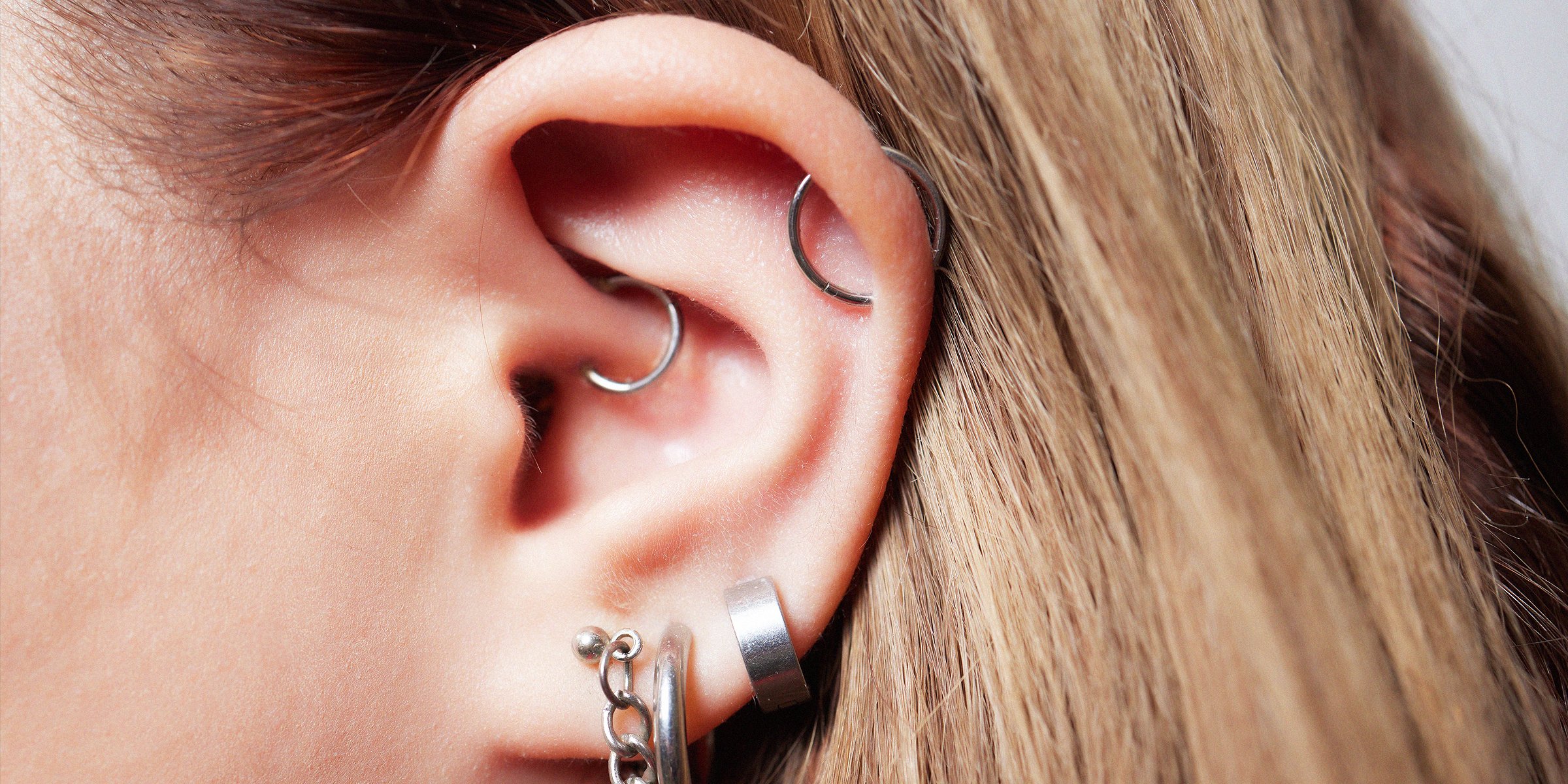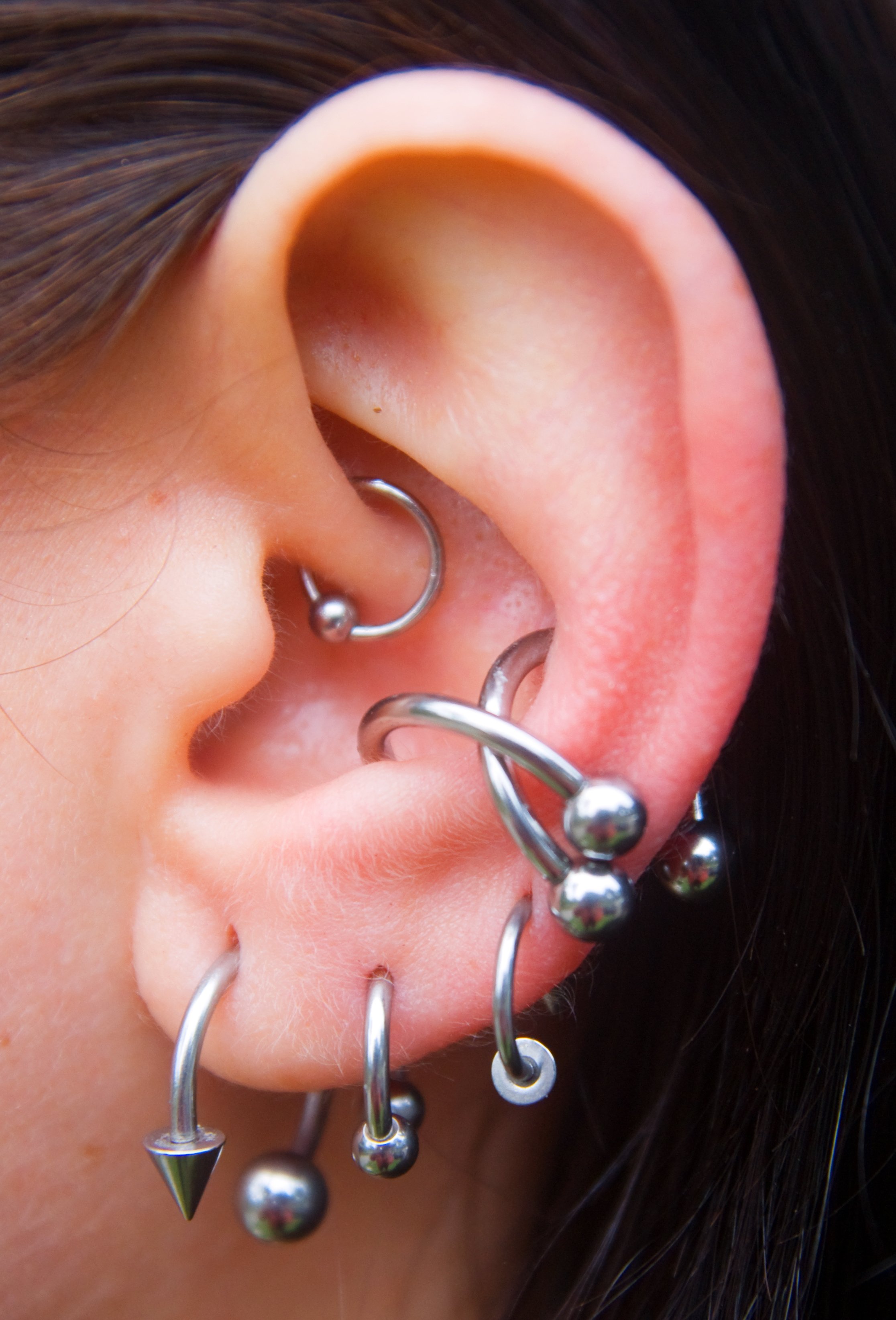
What Is Rook Piercing? Tips and Advice for Aftercare
If you are tired of boring earrings, want to take ear embellishment further, and are considering rook piercing, there are a number of factors to take into account.
Piercings are in, and it looks like they are here to stay. For millennia, one of the commonest piercings was to the earlobe. Now, every area of the ear is pierced, and one of the most popular growing trends is rook piercing.
You may be tempted to take your ear ornamentation to the next level, but before you run off and get that rook piercing, make sure you know the pros and cons of the procedure, the possible risks, and the side effects.

Rook piercing. | Source: Getty Images
Rook piercing is done on the uppermost ridge of the inner ear, perforates skin, flesh, and cartilage, and is one of the less frequent choices. The outer edge of the shell of the ear, the helix, where the cartilage isn't as thick, is more common.
Choosing a technician for your procedure is vitally important. It should be an established professional with a great deal of experience who works under sterile conditions and with the utmost care.
An infected piercing can lead to an abscess or a generalized infection, which untreated can spread throughout the body.
Any procedure that breaks the skin barrier and introduces foreign bodies carries a risk of infection and must be carefully considered. Choose high-quality hypoallergenic jewelry, which will minimize the risks.
Going Through Rook Piercing
The technician will first sterilize the area and possibly apply a numbing spray. The rook piercing is done with a large-bore hollow needle, after which the jewelry will be inserted. Yes, it hurts, and Dr. Gary Goldenberg, MD, a dermatologist, warns:
"This type of piercing goes through a very thick layer of cartilage, which is usually more painful."
Every piece of equipment your piercer uses should be sterile, and the jewelry of choice should be either 14k gold or titanium to prevent allergic reactions or rejection of the piercing.
Healing after the Procedure
Because the rook piercing goes through a double layer of cartilage, it will be painful. Most people describe the moment of the procedure as a "pinching," but the subsequent pain can be considerable, depending on your pain threshold.
A rook piercing can take up to 9 months to a year to heal, compared to a lobe piercing which takes about nine weeks. It would be best if you chose a "loose" ornament that allows plenty of space on either side to accommodate swelling of the ear.
Rook Piercing Aftercare
Aftercare in a rook piercing is crucial. Experts advise cleaning your rook piercing three times a day with a sterile saline solution. After the cleaning, gently dry the area with gauze. This care should be a daily routine for the first six months.
Do not change or remove your piercing under any circumstances, and do not sleep in the ear you had pierced. You are also advised not to go swimming in the pool or the ocean until your rook piercing is healed.
Opt for showers rather than baths, and rinse your piercing with saline solution after you bathe. Disinfect your phone or device in close contact with your piercing regularly, and change your pillowcase often. Advise your hairdresser or colorist that you have a recent piercing so as not to expose the wound to harsh chemicals.
Rook Piercing Side Effects
Right after your piercing, you can expect some swelling, bruising, and bleeding, as well as some pain. In the first days, your piercing may secrete a clear fluid and form a crust. This is normal and part of the healing process. and you should not pick at or scratch it, or you may infect the wound.
Infection is the most significant risk in a rook piercing. The symptoms are swelling, pain, redness, pus, and red streaks spreading out from the piercing. You should contact a doctor immediately if you exhibit any of these symptoms.
An infected piercing can lead to an abscess or a generalized infection, which, untreated, can spread throughout the body. The surface of the piercing will heal faster than the inside. You may think your rook piercing is healed, but the cartilage will still be fragile and raw.
If you have a tendency to form keloid scarring, a piercing may not be a good idea. The keloid scar will grow from the site of the piercing and eventually overwhelm the area with unsightly tissue.
Other Types of Ear Piercing
Apart from traditional lobe piercing, the ear has become one of the most popular sites for piercing, along with nose and philtrum piercings. The helix only pierces the thin outer edge of the ear at one site. The industrial piercing pierces the outer edge in two places and transverse the ear with a bar.
Another delicate procedure is the conch piercing placed in the inner ear's sensitive whorl. The tragus piercing is placed on that little knob of cartilage in front of the entrance to the ear canal.
The tragus piercing is also very painful and can take up to six months to heal. When thinking about your rook piercing, please be aware that not every person's ear anatomy will allow for it. Consult your piercer and follow their advice.
The information in this article is not intended or implied to be a substitute for professional medical advice, diagnosis or treatment. All content, including text, and images contained on WomanlyLive.com, or available through WomanlyLive.com is for general information purposes only. WomanlyLive.com does not take responsibility for any action taken as a result of reading this article. Before undertaking any course of treatment please consult with your healthcare provider.
